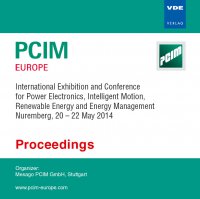Impact of the Working Frequency on Wireless Power Transfer Systems
Conference: PCIM Europe 2014 - International Exhibition and Conference for Power Electronics, Intelligent Motion, Renewable Energy and Energy Management
05/20/2014 - 05/22/2014 at Nürnberg, Deutschland
Proceedings: PCIM Europe 2014
Pages: 6Language: englishTyp: PDF
Personal VDE Members are entitled to a 10% discount on this title
Authors:
Turki, Faical; Wiengarten, Ralf; Reising, Viktor; Kratser, Alexey (Paul-Vahle GmbH und Co. KG, Germany)
Abstract:
Inductive wireless power transfers systems work typically on frequencies above 10kHz. This is due to the relation between the size of the components and the nominal frequency. In most of the cases the higher the frequency the smaller the passive components are. On the other hand the working frequency is limited by the power semiconductors, which have to switch at this speed. Typically the switching losses are proportional to the frequency, which makes a trade-off mandatory. An actual discussion about the choice of the ideal work frequency can be observed these times in the development of inductive charging systems for the e-mobility. Therefore the two frequencies 87kHz and 153kHz are examined here. A comparison between two conservative designs at the chosen frequencies shows a clear difference in the size of the secondary coils. Furthermore, it can be found that the same ferrite core is heated up stronger when used 87kHz. This has to be seen under the circumstance that the same power is delivered by the same ferrite core. Therefore it can be deduced that the higher frequency is the better choice when losses have to be reduced, size have to be minimized and the local heating has to be prevented.


